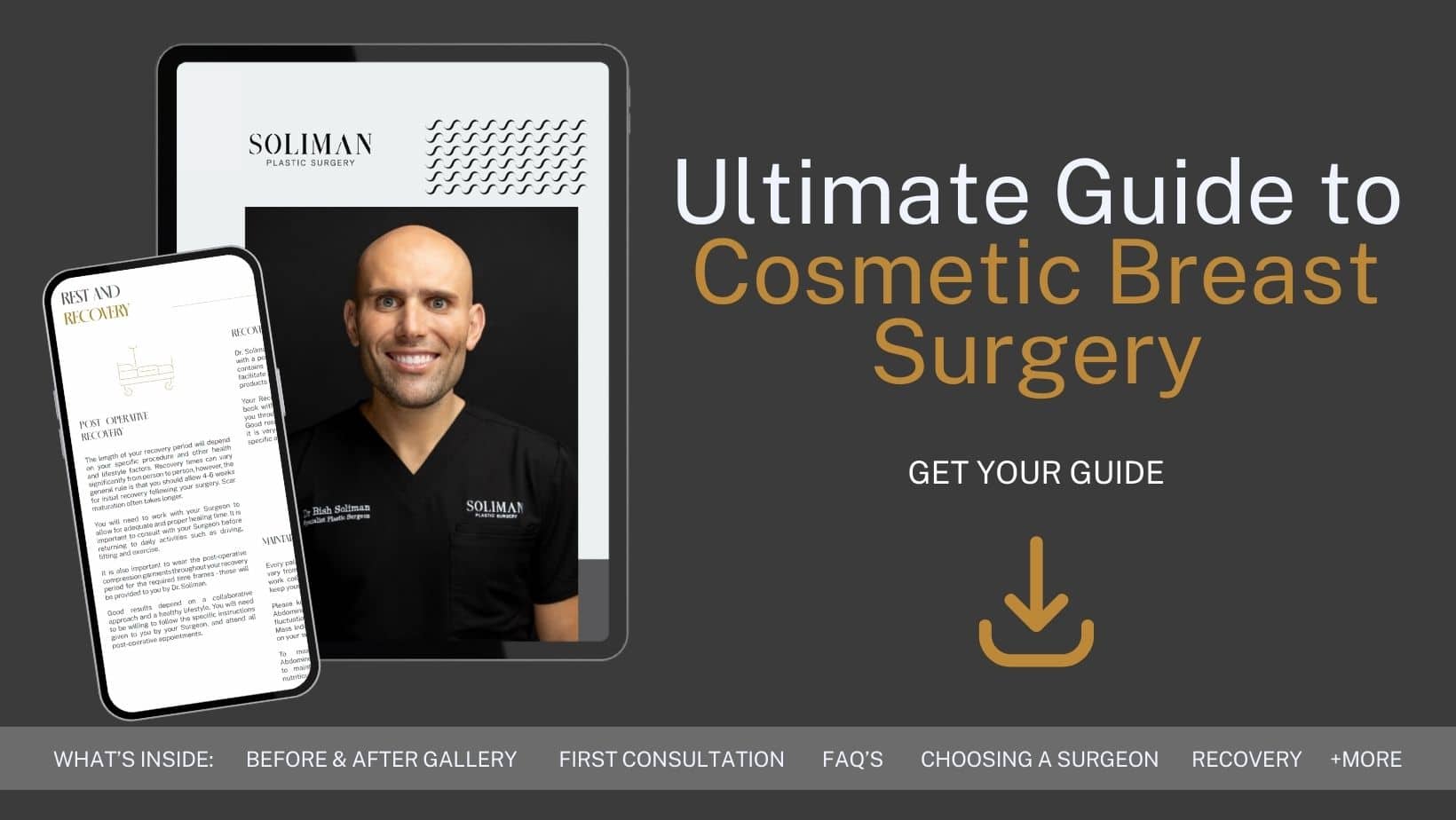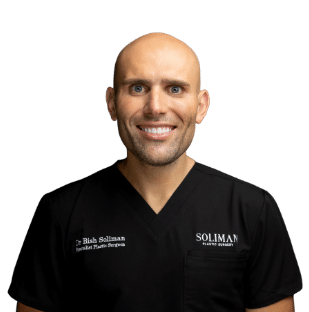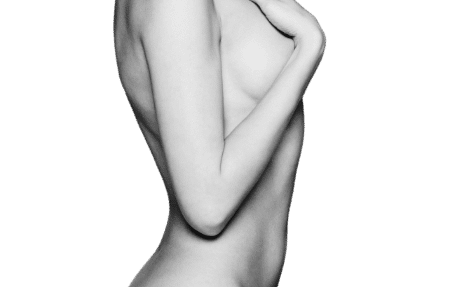What is aFat Grafting
Fat grafting, also known as fat transfer, is a procedure in plastic and reconstructive surgery that involves transferring fat from one part of the body to another. It’s a technique that has gained significant popularity in recent years, especially in altering the breast area.
This procedure is twofold: it first involves liposuction, where fat is harvested from a donor site on the patient’s body—commonly from areas like the abdomen, thighs, or flanks. This process not only helps in collecting fat for the transfer but also contours the donor site, offering a dual benefit.
The harvested fat is then carefully processed and purified. This step is crucial as it ensures only healthy, viable fat cells are used for grafting. The purified fat is then meticulously injected into the breasts in a layered approach. This technique allows for a natural-looking increase in breast size and an improvement in breast shape.
Unlike traditional breast implants, fat grafting provides a more natural enhancement. Since it uses the patient’s own fat, it eliminates the risk of allergic reactions or rejection by the body. Additionally, fat grafting can address issues like breast asymmetry or can be used in breast reconstruction after mastectomy.
Versatility is a key characteristic of fat grafting. It not only increases breast size but also improves the overall breast contour, offering a more natural result. This procedure might be a good option for those seeking a modest increase in breast size and a more natural look compared to implants.
Who Is a Good Candidate for Fat Transfer to the Breasts?
Good candidates for fat transfer to the breasts are individuals who are looking for a moderate increase in breast size and prefer a more natural approach compared to traditional breast implants. Here are some criteria that can help determine if someone is a good candidate for this procedure:
- Healthy Body Weight: Candidates should be at or near their ideal body weight. This is important because significant weight fluctuations post-procedure can affect the results of the fat transfer.
- Sufficient Donor Fat: There must be enough fat in other areas of the body to harvest for the transfer. Common donor sites include the abdomen, thighs, and buttocks.
- Realistic Expectations: Understanding what the procedure can and cannot achieve is crucial. Fat transfer provides a natural enhancement, so those seeking a substantial increase in breast size might need to consider other options.
- Good Physical Health: As with any surgical procedure, candidates should be in good overall health. This means no active infections, uncontrolled chronic diseases, or serious medical conditions that could impair healing or increase surgical risk.
- Non-smokers: Smoking can significantly affect the healing process and the survival of the grafted fat cells. Candidates are advised to quit smoking well in advance of the surgery.
- Aesthetic Goals: This procedure is recommended for individuals looking to improve breast symmetry, enhance overall breast shape, or restore breast volume lost due to ageing, weight fluctuations, or childbirth.
Each patient is unique, and the decision to undergo fat grafting should be made after a thorough consultation with Dr Bish Soliman. Dr Soliman will assess your anatomy, medical history, and aesthetic goals to determine if fat grafting to the breasts is the most suitable option.
Download Dr Bish Soliman Cosmetic Breast Surgery Guide

Fat Grafting to the BreastsBenefits of Fat Grafting to the Breasts
Fat grafting to the breasts presents several advantages, making it an increasingly popular choice for breast enhancement. Here are some key benefits:
- Natural Look and Feel: One of the most significant benefits of fat grafting is the natural result it offers. Since the augmentation uses the patient’s own fat, the breasts feel softer and more natural compared to implants.
- Dual Benefit: This procedure not only enhances the breasts but also slims down the area from where fat is harvested. It’s like getting a liposuction and breast augmentation in one.
- Reduced Risk of Allergic Reactions: Since the procedure uses the patient’s own body fat, there is no risk of allergic reactions, which can sometimes occur with implants.
- No Need for Replacement: Unlike breast implants that may require replacement after a certain period, fat grafts, if successful, are permanent. This can eliminate the need for future surgeries.
- Minimal Scarring: The procedure involves small incisions for fat extraction and injection, leading to minimal scarring compared to traditional breast augmentation surgery.
- Improved Breast Shape and Symmetry: Fat grafting allows Dr Soliman to alter the breast shape in a very detailed manner, improving overall symmetry and contour.
- Safety: There’s a lower risk of complications such as implant rupture or capsular contracture, which are concerns associated with breast implants.
- Recovery: Generally, the recovery from fat grafting is quicker and less painful than that from implant surgery.
Your consultation
Before any surgical procedure, you will need some personalised guidance from your surgeon, as well as the time to discuss your personal needs and desired results to create an appropriate treatment plan for you.
During your consultation, you will receive in-depth information and advice about your individually tailored procedure, including preparation and recovery instructions and what to expect before the procedure, on the day of your procedure and after surgery.
Dr Bish Soliman will need to assess whether or not you are a suitable candidate for the procedure. You may be asked about your health history, history of past surgical procedures, and lifestyle factors to determine if the procedure is right for you. Your consultation will also provide you with a personalised quote, taking all of your personalised procedure steps into consideration, so that you can understand the costs of your procedure.
The decision to undergo Fat Transfer to the Breasts is personal, so having a thorough consultation beforehand will help you to make an informed decision and feel comfortable with your surgeon, ensuring that you have a mutual understanding of your desired results for the procedure.
You can book your consultation at our Sydney or North Shore locations if you would like to discuss undergoing Fat Transfer to the Breasts .
Fat Transfer to the Breasts– Procedure Details
Understanding the procedure details of fat transfer to the breasts can help set realistic expectations and prepare for the surgery. Here’s a step-by-step overview:
- Consultation and Planning: Initially, a thorough consultation with Dr Bish Soliman is essential. During this phase, Dr Soliman evaluates the patient’s health, discusses goals, and creates a personalised treatment plan. This includes selecting the donor sites for fat removal and discussing the expected outcome.
- Preparation: Prior to the surgery, patients may need to undergo some medical evaluations or adjust certain medications. Smoking cessation is strongly advised, and patients should avoid taking aspirin and certain anti-inflammatory drugs that can increase bleeding.
- Anaesthesia: The procedure is performed under general anaesthesia to ensure the patient’s comfort.
- Harvesting Fat: Dr Soliman starts by extracting fat from the predetermined donor sites. This is done through liposuction, involving small incisions and the use of a cannula to dislodge and suction out fat.
- Purification of Fat: Once the fat is harvested, it goes through a purification process. This step is crucial to separate the healthy, viable fat cells from the damaged ones and the fluid removed during liposuction.
- Injection of Fat into the Breasts: The purified fat is then carefully injected into the breasts. Dr Soliman uses different techniques to evenly distribute the fat and sculpt the breasts to the desired shape and size.
- Layered Approach: Fat is injected in layers to ensure a smooth, natural look and to promote the survival of the fat cells. Dr Soliman meticulously shapes the breasts during this process.
- Closing Incisions: Incisions are then closed with sutures, skin adhesive, or surgical tape.
- Immediate Post-Operative Phase: After the surgery, patients are taken into a recovery area where they are closely monitored. Once stabilised, patients can usually go home the same day.
- Post-Procedure Care: Post-operative instructions include care for the surgical site, medications to aid healing and reduce the risk of infection, specific concerns to look for at the surgical site or in overall health, and when to follow up with Dr Soliman.
Surgery Recovery Recovery after Fat Grafting
The recovery period following fat grafting to the breasts is a crucial time where the body heals and adjusts to the new changes. Here’s what patients can expect during the recovery phase:
- Immediate Post-Operative Period: You might experience mild to moderate discomfort, swelling, and bruising in both the breast area and the fat donor sites. Pain medication prescribed by Dr Soliman can help manage this.
- First Few Days: During the first few days, rest is essential. Patients are advised to sleep on their back and avoid putting any pressure on the breasts or the donor sites.
- Wearing a Compression Garment: A compression garment is usually recommended for the areas where liposuction was performed. This helps reduce swelling and supports the healing process. The duration of wearing these garments can vary based on the surgeon’s advice.
- Activity Limitations: Patients are generally advised to avoid strenuous activities and heavy lifting for a few weeks post-surgery. Light walking is encouraged to promote blood circulation.
- Follow-Up Visits: Regular follow-up appointments are necessary to monitor the healing process and the integration of the fat grafts.
- Swelling and Bruising: Swelling and bruising will gradually subside over a few weeks. The final shape and size of the breasts will become more apparent as the swelling diminishes.
- Returning to Normal Activities: Most patients can return to work and normal activities within a week or two, depending on the nature of their job and the extent of the procedure.
- Long-Term Care: Long-term care includes maintaining a stable weight, as significant weight fluctuations can affect the results. Regular self-examinations and mammograms, as recommended for breast health, should be continued.
- Final Results: It may take several months for the final results to stabilise, as it takes time for the transplanted fat cells to establish a new blood supply and integrate with the surrounding tissues.
Risks and Complications Associated with Fat Grafting to the Breasts
As with any surgical procedure, fat grafting to the breasts carries certain risks and potential complications. It’s important for patients to understand these risks to make an informed decision:
- Fat Absorption: Some of the transferred fat may not survive in its new location, leading to less volume increase than initially expected. This is a common occurrence and might require additional procedures for optimal results.
- Irregularities in Contour: There is a possibility of irregularities or lumps in both the donor and recipient sites. This can be due to uneven fat distribution or variable absorption rates.
- Infection: Although rare, there is a risk of infection at the site of fat removal or injection. Following post-operative care instructions can minimise this risk.
- Scarring: While the incisions are small, there is a risk of scarring. The extent of scarring varies from person to person.
- Changes in Sensation: Some patients may experience temporary or, rarely, permanent changes in breast or nipple sensation.
- Cysts or Oil Cysts: Small cysts can form if fat cells do not survive and are broken down by the body.
- Calcification: Fat grafting can sometimes lead to calcification, which may interfere with mammography or be mistaken for cancerous changes.
- General Surgical Risks: As with any surgery, there are general risks such as bleeding, anaesthesia risks, and poor healing.
- Need for Additional Surgery: In some cases, additional surgery may be needed to correct complications or improve results.
Medical References about Fat Grafting to the Breasts
Learn More About Dr Bish Soliman
Dr Bish Soliman is a Sydney based Specialist Plastic and Reconstructive Surgeon specialising in complex microsurgical reconstruction including breast reconstruction, aesthetic surgery of the face, breast, and body as well as skin cancer surgery.



